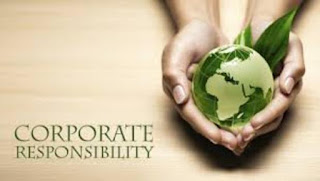Business transactions are far more complex than most staff
members give the finance team credit for. It seems to be only the professionals
in organisations that really get just how complex purchasing can be.
Then there’s the purchasing word itself. There are some
professionals with a heavy dislike for the term purchasing; taking the view,
rightly so that it is a transactional based buying process, when in reality,
procuring products and services takes a whole spectrum of issues into
consideration.
Purchasing departments often have buyers appointed to deal
with commercial contracts and make all the buying decisions. There comes a
point in larger enterprises though when buyers just can’t keep up.
When that time comes, procurement departments are put in
place and those staff in there must be team players, because there’s a list of
other team members they will need to work well with alongside, with everyone
acting in the best interest of the business.
6 Teams involved in the buying process
1. End users
Every team member must have tools to get their job done, but
rarely do they get to buy the tools they need. They need approval from the
finance department and then the finance team pass the information to the
procurement team to get started with the purchasing.
End users should always be involved in purchasing decisions
because they know the tools they need to get the job done.
2. Finance department
This is the department that the majority of staff thinks has
money to throw around. In reality they’re working to tight budgets and juggling
figures left, right and centre to stay within the assigned budgets.
To get budgets going further, procurement teams are often in
place to ensure they get the best value and services they can for the money
going out.
3. The procurement team
In large organisations, there are buyers appointed. These
are people who many think have a whale of a time doing their job because all
they do is buy stuff.
Sounds fun!
That’s far from the truth as you may well know, because
business transactions require contracts to be put out to tender, procurement
compliance, knowledge of commercial contract law and many other factors.
4. Legal teams
It’s rare for in-house legal teams to be involved in buying
processes but it has been known to happen with large contracts.
The public sector especially given the huge amount of sums
involved in many projects.
Housing development, and commercial developments where
there’s significant oversight of legal compliance required often need the input
of either an in-house legal team or a legal advisor on retainer to oversee
projects ensuring everything is done above board.
5. HR departments
In case you’re a student, we’re talking about Human
Resources here. This is the team that does the hiring and firing, ensuring that
when the firing stage comes, the employer isn’t going to lose a legal battle if
an employee takes them to a tribunal for unfair dismissal.
Where HR comes into the procurement process is with regards
to uniforms, and perhaps PPE equipment, for which staff will raise concerns
with HR who then liaise with other teams to get whatever equipment is required.
This department will also be responsible for attracting and retaining top
talent within the company.
6. Marketing teams
When there’s corporate branding required, the marketing team
will have input into the buying or hiring process of equipment when it’s going
to strengthen and/or promote the brand.
When anything affects a brands image or reputation, the
marking team is there to capitalise on opportunities to ensure the business
interests are maximised for growth.
In conclusion
With all the teams and members involved in them, it’s easy
to see how things become far more complex than they need to be. Buying
decisions are not made instantaneously and there are some contracts that can be
put out to tender, taking months to go through terms and conditions, whilst
always ensuring legal compliance throughout.
That’s the process of the larger corporations, so as you’ll
imagine, without the right teams in place, small businesses will have a hard
time getting the best value on services bought because they don’t have all
those people in-house to work through everything.
If your company is one or more team members short, or lack
the specialist knowledge you need to procure the best services at the most cost
efficient price - outsource it, because it’s far more cost efficient.
For small to medium sized businesses, it’s rare that you’ll
be able to get the best value without input from different teams with
collective knowledge and negotiation skills.
Does your company need a specialised cost cutting exercise
done?
Call the Procurement Group on 0800 0193 244 or click the
link below to contact us.




